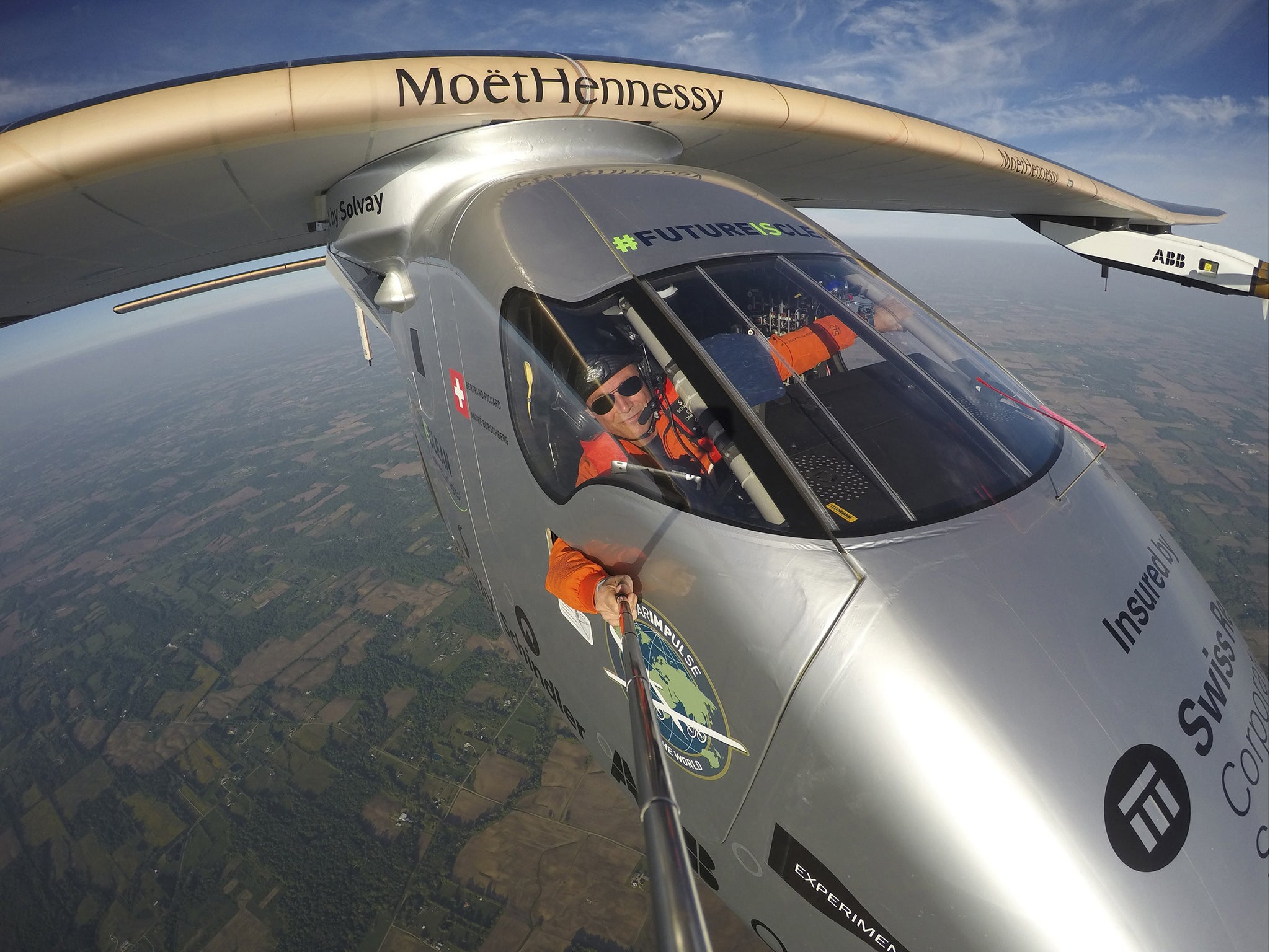Solar Impulse 2: The groundbreaking aircraft demonstrating the possibilities of clean energy
Two pilots circumnavigate the globe without a drop of fuel in a plane that brings a whole new dimension to the concept of long-haul travel

Your support helps us to tell the story
From reproductive rights to climate change to Big Tech, The Independent is on the ground when the story is developing. Whether it's investigating the financials of Elon Musk's pro-Trump PAC or producing our latest documentary, 'The A Word', which shines a light on the American women fighting for reproductive rights, we know how important it is to parse out the facts from the messaging.
At such a critical moment in US history, we need reporters on the ground. Your donation allows us to keep sending journalists to speak to both sides of the story.
The Independent is trusted by Americans across the entire political spectrum. And unlike many other quality news outlets, we choose not to lock Americans out of our reporting and analysis with paywalls. We believe quality journalism should be available to everyone, paid for by those who can afford it.
Your support makes all the difference.Bertrand Piccard and Andre Borschberg shortly hope to land a plane in New York City. That in and of itself is nothing to shout about – thousands of planes come and go from the area’s three major airports every day. But by the time they touch down, Piccard and Borschberg will have flown more than halfway around the world – using only solar power.
The idea came to Piccard after he and a partner became the first humans to circle the globe nonstop in a hot-air balloon fuelled by liquid propane in 1999. “Every day, I was afraid to fall short of gas,” he says of that flight. (They took off with 3.7 tons of fuel on board and landed with only 88 pounds to spare.) He decided he would one day take another flight around the world without a drop of fuel – achieving “perpetual flight” with “unlimited endurance”.
With that goal in mind, Piccard teamed up with Borschberg, an engineer and entrepreneur, to develop a solar-powered, fuel-free plane. The single-pilot Solar Impulse 2 (Si2) is made out of extremely light materials, like carbon fiber; its wingspan is larger than that of a Boeing 747 jumbo jet, but it weighs roughly as much as a sedan. The plane has 17,248 solar cells on its wings, fuselage and tail, which turn sunlight into electricity, and uses four electric motors and four battery packs. The former operate with a 97 per cent efficiency rate (compared with the roughly 30 per cent efficiency rate of a petrol-powered car), and the latter store enough energy to make the Si2 the first solar plane that can fly through the night.
After years of development and test flights, Piccard and Borschberg lifted off in Abu Dhabi in the United Arab Emirates, in March 2015. They have taken turns pilotting and made stops in India, Myanmar, China, Japan, Hawaii, California and Phoenix. They plan to circle the globe and arrive back in Abu Dhabi some time in June or July this year.
Theoretically, the plane can use solar power to fly indefinitely, but a lone human pilot can remain aloft for only so long. Borschberg already shattered the previous 76-hour record for a non-stop solo flight with the eighth leg of the journey, when he flew for 117 hours and 52 minutes from Nagoya, Japan, to Hawaii last summer.
To the Solar Impulse team, the stunt is really about demonstrating the possibilities of clean energy. They want to inspire new technologies and applications that not only reduce energy consumption and improve quality of life but also create jobs and profits. Many of the materials and technologies in the Si2 can be translated for use on the ground, Borschberg says. The batteries and electric motors can be used in cars, the insulation that protects the batteries from cold at high altitudes has already been used in refrigerators, and Schindler, one of their dozens of partners, has made a solar-powered elevator system inspired by the Si2. Borschberg sees two other big projects emerging from the Si2: electric airplanes of increasing size and capacity, and an unmanned version of the solar plane that can stay aloft for months at a time and function like a satellite.
“If you just make a press conference for clean technologies, nobody will listen,” Piccard says. “But when you fly around the world with no fuel, people say, ‘Wow.’”
(c) 2016 IBT Media Inc. All rights reserved.
Join our commenting forum
Join thought-provoking conversations, follow other Independent readers and see their replies
Comments